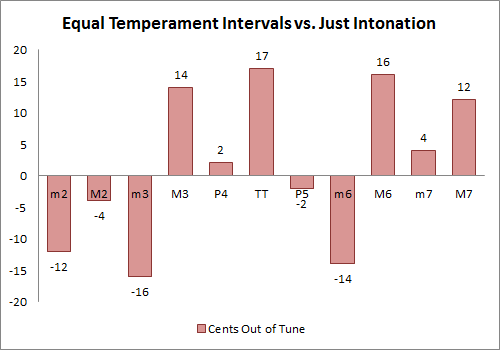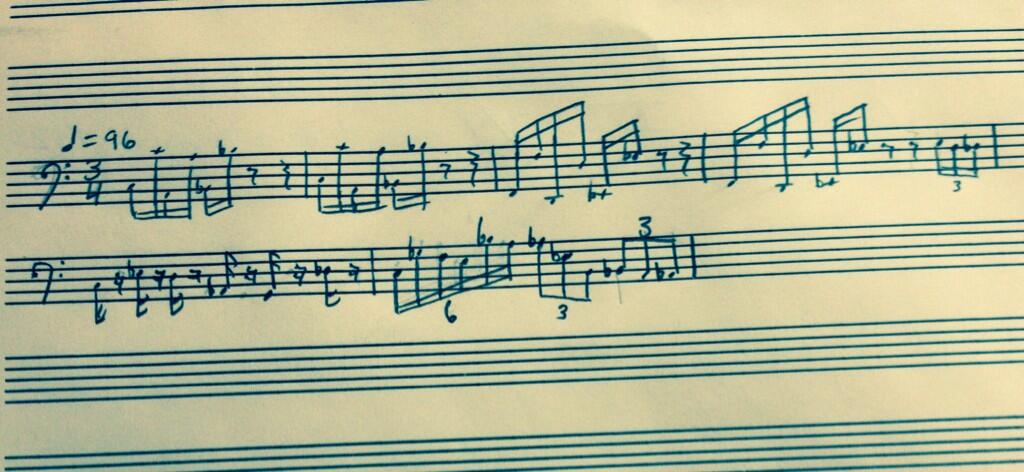Here’s a re-scoring I did of the trailer for the upcoming reboot of the old Descent games from the 90′s. I thought the trailer was really awesome, but the music felt kind of “fantasy quest”, rather than “epic underground robot battles” to me, so I decided to try re-scoring it. Some of the music near the beginning and end is inspired by the music from the Lunar Outpost level from the original Descent. Hope you enjoy it!
Author Archives: Alex
Crawl’s Early Access Launch Trailer is here!
Check out the latest trailer for Crawl, with awesome narration by the fabled “Old Shrimp Eyes“, and a little music score I wrote. Below is the trailer video, along with my favorite snippet from the music!
New mini-trailer for Crawl!
Here’s the first in a new series of trailers for Crawl, containing some more of my music (still can’t believe I’m getting to work with these guys!).
Equal Temperament Intonation Reference
Imagine a group of three musicians. Let’s say they want to play a major chord (C, E, G) and they want to sound “in tune” when playing this chord together. Each of them might use a tuner to make sure they’re playing their note with exact intonation. Most tuners will tell a musician how flat or sharp they are using the term cents. In equal temperament (the kind of tuning that has been mainstream for the last century or so), there are exactly 100 cents between each half step. So if a person is 50 cents sharp when playing the pitch D, they are halfway between a D and an D-sharp.
So, assuming these three musicians are all playing together and their tuners show each of their individual notes to be perfectly in tune, the entire chord must be perfectly in tune as well, right? Not necessarily. This is a common misconception about intonation, especially for young musicians (and even professionals).
Equal temperament sacrifices pure intonation for the ability to play music in any key without re-tuning. There is a mathematical problem that occurs when an instrument is tuned to have pure intervals in a single key. What happens is that, once you try to play something outside that key, you get terrible intonation. Music theorist Kyle Gann has a great introduction to this phenomenon and the history of tuning – it’s worth checking out. The important thing to remember, however, is that no interval is perfectly in tune with equal temperament (except octaves/unisons). Notes above the root of a chord must always be adjusted in order to achieve pure intervals.
The following chart shows how “out of tune” a given interval is when played with modern equal temperament:
So, for example, if a tuba player is playing a C, and a trumpet player is playing G (a perfect 5th, or “P5″ above the root note of C), the trumpet player will be 2 cents flat from a pure interval, assuming both players are playing in perfect equal temperament. As you can see, thirds and sixths are even more out of tune.
Does this mean that all pianos and other keyboard instruments are “out of tune”? Technically, yes, they are out of tune with respect to pure intervals. A piano tuned with equal temperament is not capable of playing any non-unison/octave interval with perfect just intonation. However, most modern western audiences have grown so used to the “slightly off” sound of equal temperament that they don’t notice a difference. In fact, musicians are often forced to adjust the way they tune when playing with keyboard instruments vs. other “adjustable” instruments.
So what’s the takeaway? Just be aware that this phenomenon exists, and be prepared to adjust when performing with others! The same principles hold for very large ensembles, like orchestras or bands, although intonation tendencies are sort of “averaged out” between players and sections. I hope this was at least a little informative and not too esoteric – but feel free to comment or ask questions!









